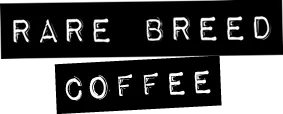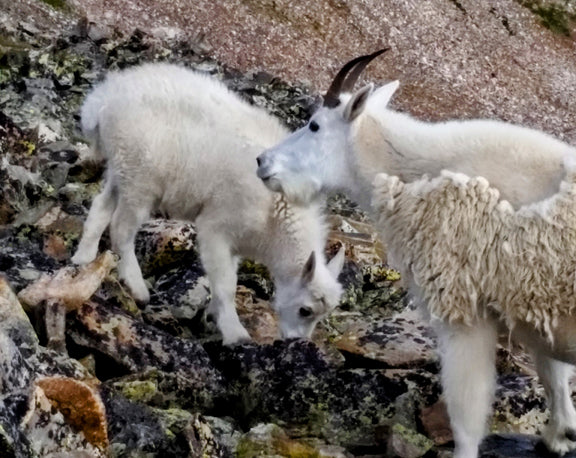Coffee: A (Not So Brief) History, From Dancing Goats to the Fine Art of Roasting
Coffee is the second-most traded commodity in the world, next to oil. So, how did it become such a “hot” commodity?
Coffee History
This history lesson begins in Arabia sometime between the 4th and 5th centuries, with a goatherd named Kaldi. One day Kaldi noticed his goats were a little more frisky than usual. He continued to watch them closely noticing the goats becoming increasingly frisky. They looked like they were actually dancing.
Kaldi noticed the dancing goats were also eating red berries from a shiny dark-leafy shrub, so he decided to try a few himself. Before long, Kaldi was dancing, too.
There was a monastery nearby, and every morning monks would walk by Kaldi and his dancing goats, on their way to morning prayer. One monk in particular was impressed with the energy Kaldi had so early in the morning. When he asked Kaldi about his energy, Kaldi pointed to the red berries.
Soon after, coffee was being shared from monastery to monastery.
Coffee Originates in Ethiopia
This story implies that coffee comes from Yemen, on the Arabian Peninsula, where Europeans first found it growing. However, research shows that the Coffee Arabica plant originates on the plateaus of central Ethiopia, where it still grows wild to this day, shaded by the enormous trees of the rainforest. Historians speculate that the coffee traveled from Ethiopia to Yemen, either via Arabian traders or the Persian invasions of Egypt and Yemen. At any rate, coffee has been cultivated in Yemen since the 6th century.
As coffee began to spread in Arabia, the berry was used initially as a medicine, eventually evolving into a medicinal tea. As its popularity increased, no doubt some of those pots of steeping tea were left on the fire a little too long. The bean that was left behind, after the liquid and pulp burned away, was full of flavor and still provided the desired “energy” boost. This is how coffee as we know it became increasingly popular.
The Arabs were very protective of their coffee trees, and did not allow a single seed out of the country, unless it was roasted or boiled. However, as legend has it, an Indian pilgrim named Baba Budan bound “seven seeds” to his belly and took them back to his home in India. He cultivated those seeds and today there still exists a huge plantation of descendant coffee trees.
Noble Coffee Tree in France
The French tried to cultivate coffee, but did not succeed, since the trees can’t withstand frost. However, the Dutch did succeed by transporting the coffee seedlings to Java. (Mocha Java comes from combining the Yemen beans – Mocha being the port city in Yemen – with the beans from Java), hence the spread of coffee across the continents of Africa and Indonesia.
So, how did coffee get to Central and South America?
The story of the Noble Tree gives one explanation: The Dutch owed ardent coffee drinker King Louis XIV of France a favor. So, with much difficulty, they procured him a coffee tree. King Louis was determined to keep the tree alive and make it produce fruit. This task became the prime focus of his entire botanical department.
They built the first greenhouse in Europe for this coffee tree, which turned out to be time well spent, as it succeeded. In 1720, a gentleman by the name of Chevalier Gabriel Mathiew de Clieu stole some of the seedlings from The Noble Tree, and boarded a boat to Martinique. During the long journey, all but one of the seedlings died. In order to keep the last one alive, he gave the seedling half of his water ration. Once he reached Martinique, he planted the seedling and it thrived. Fifty years later, there were 18,791,680 coffee trees in Martinique, and coffee cultivation was established in Haiti, Mexico, and most of the Caribbean islands.
Coffee in the United States
The Founding Fathers of the United States were actually tea drinkers. It was not until the Boston Tea Party, in which Patriots revolted against the British for the new hefty tax on tea, that coffee became the drink of the Revolution, and hence, the drink of the USA.
Coffee has been roasted and served in neighborhood coffee houses all over Europe for hundreds of years, quite similar to the coffee houses we have here today. However, coffee was individually roasted in each coffee house, so it was always served fresh and full of flavor. In fact, coffee was routinely roasted in the home as well, another typical part of daily life until the late 1800s. During the Industrial Revolution, freshly roasted coffee was replaced with pre-roasted, pre-packed or canned coffee, which can be found on any grocery store shelf in the U.S.
At Rare Breed Coffee, we go back to the tradition of daily small-batch coffee roasting, delivered or shipped immediately after roasting so dedicated coffee consumers can experience the full history of coffee with every sip.
We use some of the best quality Arabica beans. There are two species of coffee that are sold in the U.S.: Coffea Robusta and Coffea Arabica. The Robusta beans, the hardier of the two and mass grown in lower altitudes, are characterized by their harsh, bitter flavor. They are typically found in inexpensive canned coffee and office coffee.
Understanding how and why coffee is graded will help you understand why we’re so passionate about what we do. Stay tuned for our next post to get the inside scoop.

